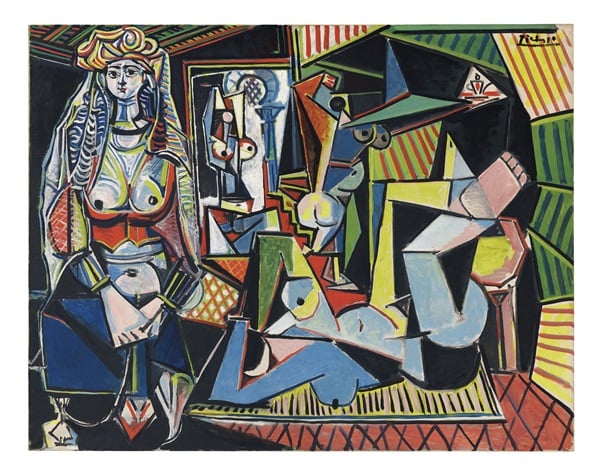Analysis
$140 Million Picasso at Christie’s Is World’s Most Expensive Painting at Auction
The painting was bought at the historic Ganz sale in 1997 for $31.9 million.

Photo; Courtesy Christie's.
The painting was bought at the historic Ganz sale in 1997 for $31.9 million.

Eileen Kinsella

In May, Christie’s will offer Picasso’s iconic Les Femmes d’Alger (1955), a painting that comes with a whopping $140 million estimate — yes, that’s just the estimate, which traditionally marks the lower end of price expectations.
Who puts an estimate like that on a painting? And publishes it.
Having already notched the record for the highest ever painting at auction—Francis Bacon’s Three Studies of Lucian Freud sold for $142.2 million in 2013—it seems the auction house is talking aim at the same nosebleed territory once again. Bold move either way.
The work carries a guarantee, though the house is reportedly not saying whether it financed that guarantee on its own or has enlisted a third party, as auction houses do more and more in an effort to mitigate risk. It would take a bank or a hedge fund or some cash-happy billionaire to back that guarantee. Risky business at this number.
The Picasso was part of the legendary Victor and Sally Ganz auction that took place at Christie’s in 1997 (See: 10 Game Changing Auctions),when it was bought for $31.9 million by a London dealer on behalf of a client. The consignor to the upcoming Christie’s sale is a European client who has not been publicly identified.
Now, the Picasso, which carries one of the highest—if not the highest ever—presale estimates, is the centerpiece of another innovative auction, titled “Looking Forward to the Past,” curated by Christie’s contemporary wunderkind Loïc Gouzer, the same specialist behind last spring’s much-hyped “If I Live I’ll See You Tuesday.” That sale featured contemporary art by the likes of Richard Prince and Christopher Wool and took in $134.6 million (see: Christie’s New Contemporary Sale: A Thumping $135 Million Success and Art Market Analysis: Richard Prince vs. Christopher Wool).
“Looking Forward to the Past,” features both modern and contemporary works. In an interview with the New York Times, Gouzer noted a shift in collecting patterns whereby collectors nowadays “start with contemporary, and then they start to look for other works that have quality, relevance and freshness.”
Gouzer described a recent visit to the Picasso museum and said he was “blown away” by what he saw. “In a world where your iPhone is out of fashion in 10 days, everything [Picasso] did still looks so relevant and fresh.”
Other works in the sale include a 1950s Mark Rothko abstract (estimated at $40 million), a 1902 Monet painting estimated at $35 million, as well as works by Piet Mondrian, Egon Schiele, Magritte, and Martin Kippenberger.
The art market and the auction world have come a long way since the 1997 Ganz sale, not the least of which is demonstrated by the quadrupling of the expected Picasso price—in 1997, it carried an estimate of $10-12 million. At the May sale, it could likely go well above $140 million). The overall sale took in $206.5 million, far surpassing its expectations of $125 million, a tidy sum considering the Ganzes were a low-profile Manhattan couple who assembled their collection over five decades for about $2 million. (See: Epic Christie’s $852.9 Million Blockbuster Contemporary Art Sale Is the Highest Ever.)
The first painting Victor Ganz ever purchased for the collection was Picasso’s Le Reve (1932), a portrait of his mistress Marie-Thérèse Walter, which he picked up for $7,000 in 1941. At the 1997 auction, that price soared to $48.4 million. Giddy Christie’s employees, in the moments following the sale, opened champagne and toasted: “To the profit-sharing!”